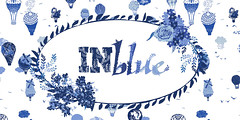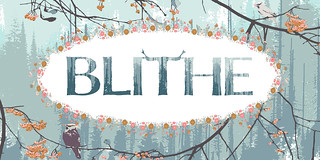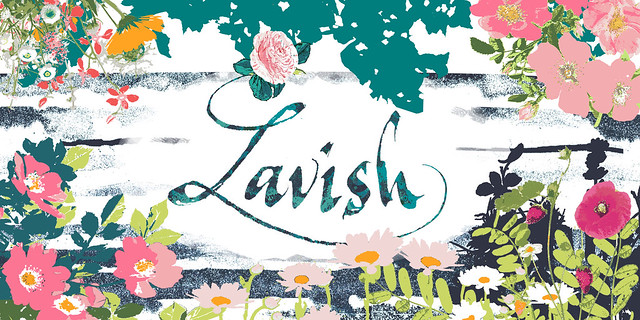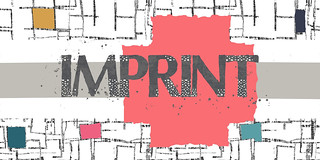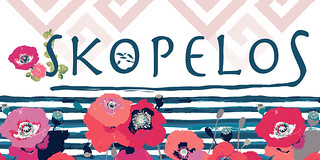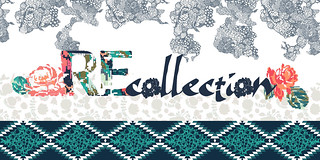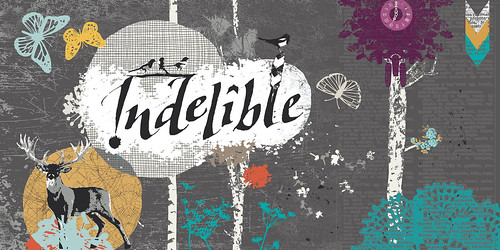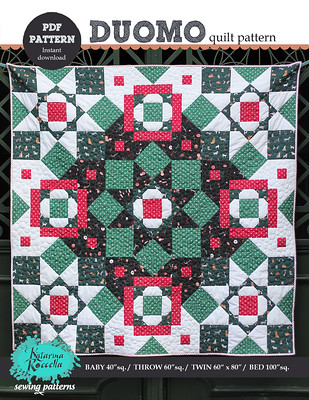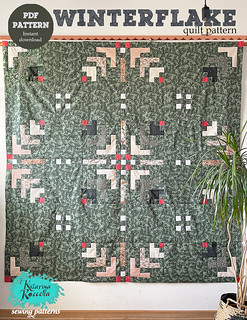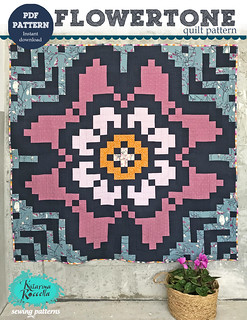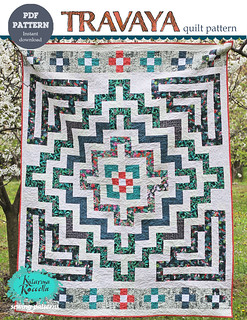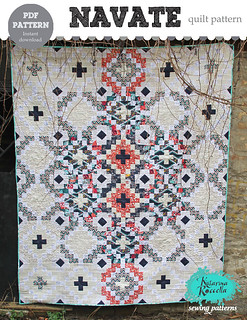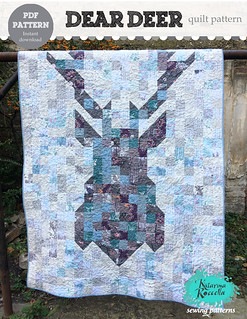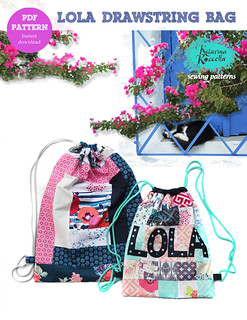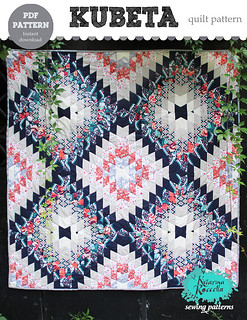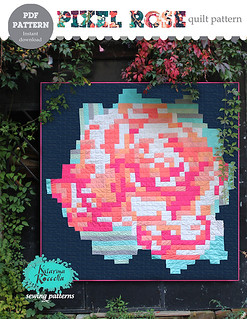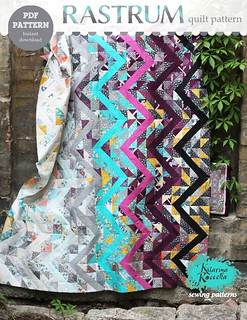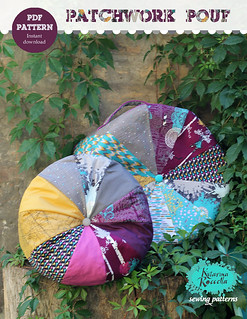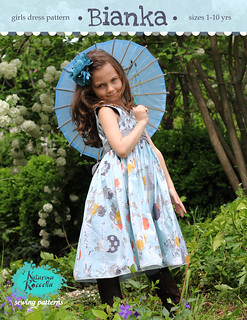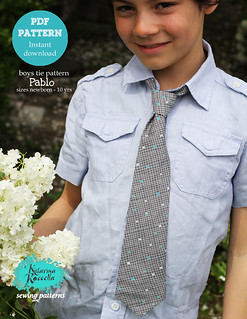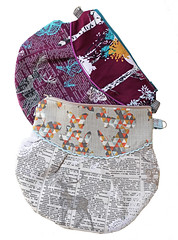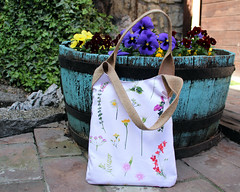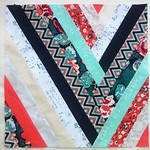Saturday, 20 December 2014
Friday, 19 December 2014
Fringe poncho tutorial -2 styles
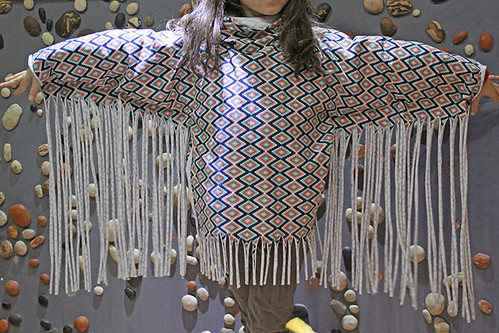
If you are on of those people willing to try knits , but have fear of this stretchy fabric, then this is the perfect project for you. It's suitable for kids and adults as well. It comes in 2 different versions :)
4 years ago, I wrote about THIS great project with knits (it would make a perfect gift), so maybe you can try that one as well? So easy!!!
Anyway, back to the fringe poncho and sewing with knits: the most important thing is to use ball point needle (for stretchy jersey and knit fabrics) and to be sure, that according to your needle size and thread that you will use, to adjust the thread tension on your machine. For the parts of your clothes that will need some stretching, use the zig zag stitch or the twin needle. That's basically all you need to know for the begging, the rest is all about practice and experience ;)
Once I started using a serger I fell in love with sewing knits! It's something else!!! But, luckily, this tutorial has barely 2-3 straight stitches, and you will not need a serger for that. What I love about knits is that the hem is easy-rolling (the fabric edge gets rolled up), this means that for some projects you don't need hem finishing (which for some people can be very nerve wracking).
So let's get started!
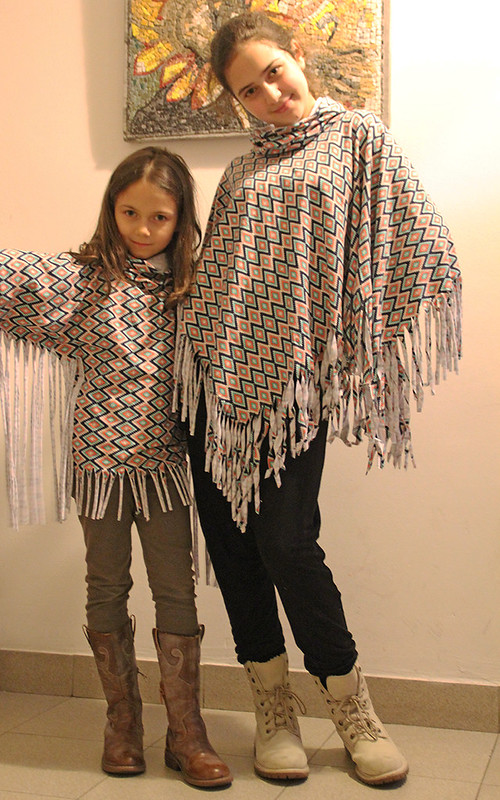
You will need:
- 1 - 1. 5 yard of jersey knit fabric (depending on the size)
- scissors
- rotary cutter (with sharp blade)
- sewing machine
- stretch needle 70/10
- thread
- pins
- paper adhesive tape
It is very important to determine the measurements for the poncho:
1. for the width <--->
2. for the length ^
You can maybe understand it better if looking at this picture (that's from my kaftan tutorial )

Take those measurements from your child (or you) or from the person that you are sewing this for, using the tape measure. According to that buy/cut the knit.
You should know that knit comes in very abundant width of 58/60", which is great for all the garment projects and sizes.

So looking at the above picture, you will notice that the 58/60" width of the fabric ( my cutting mat is 36 x 24") was cut to 44".
That way I got the square of 44x44".
I have used the same 44x44" fabric piece for both types-styles of poncho.
So let's see the STYLE #1 first, rectangle poncho fringe, great for toddlers!
RECTANGLE FRINGE PONCHO-style 1
Step 1. Cut the fabric upon your measurements.
The width of the fabric - 58/60" will be left like that for XL women size. All the smaller sizes are to be determined by the wrist to wrist measurement. My 7 yrs old daughter has the wrist to wrist measurement of 44", so that was my width cut. The length of the fabric is to be determined by the desired length of the poncho, doubled (for front+back). I wanted the poncho for my daughter to be 22" long, so I used 44" as length. That's why and how I got the 44x44" square.
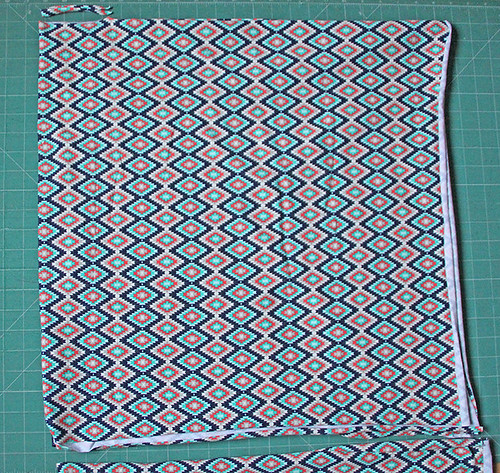
Step 2. Place your piece of the knit fabric on the cutting surface, folded in half width wise (to find the center) and cut out the neck opening that is approx. 3 x 0.5" (once opened the fabric it will be 6 x 0.5") like shown on the picture. If you are cutting in smaller sizes cut it to be full opening 4-5" x 0.5". If cutting it in bigger sizes, cut it to be full opening 7" x 0.5"

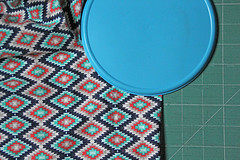
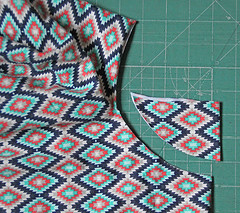
Step 3. Fold the fabric lengthwise (be precise with finding the center), so that the cut hole can be further cut in order to obtain the round shaped neckline. You can use some round shape to help you with cutting it perfectly. I have cut it at 2.5".

Step 4. This is the neckline we got. As many people have problem with making nice, round shape hemmed neckline, we will make the turtle neck. To create that, we need the additional wide fabric strip - rectangle.
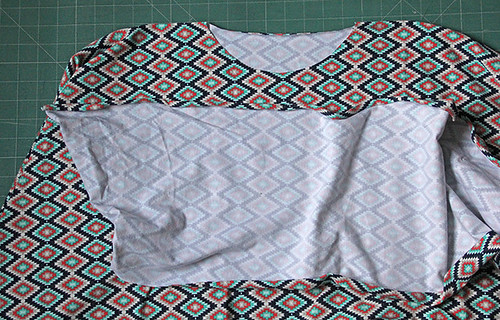
Step 5. You can determine yourself how long you wish the turtle neck to be. As I've cut my fabric width from 58" to 44", I had the leftover strip of 14", so I used that as the length.
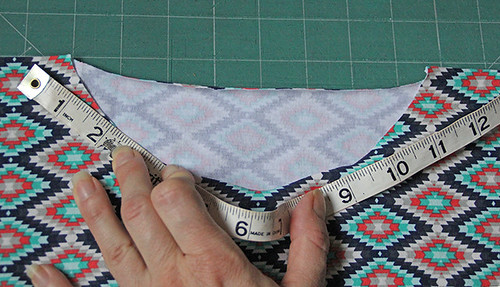
Step 6. To obtain the other, bigger measure of the rectangle, measure the circumference of the neckline opening. In my case it was 19". To that measure add 1/2" for the seam allowance(1/4"+1/4").
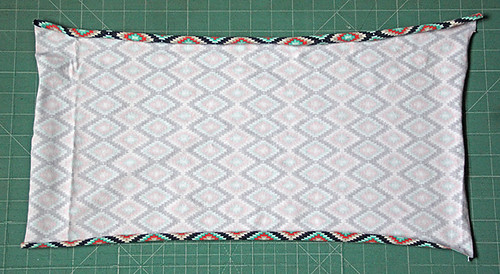
Step 7. So, my rectangle was measuring 14 x 19. 5". Be sure to match the fabric print direction.
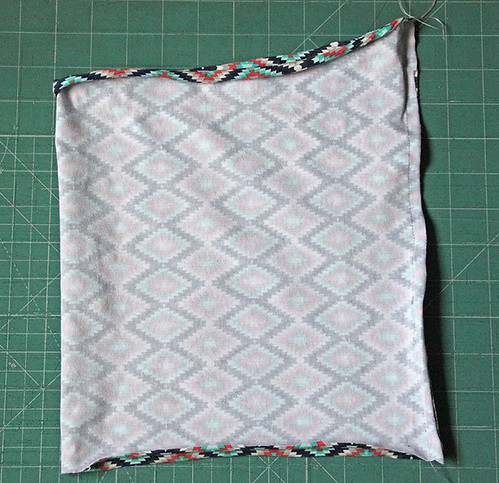
Step 8. Sew the rectangle on the shorter sides, right sides inside.
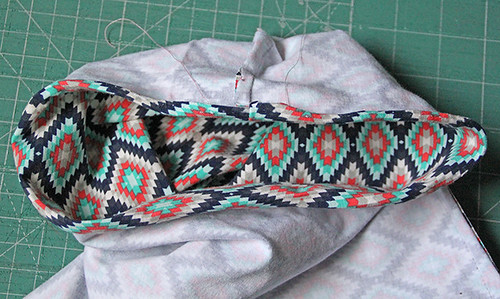
Step 9. You can decide if you want to leave the final hem rolled (like I did) or you can fold the edge and hem it using the zig zag stitch or double straight stitch (with twin needle).
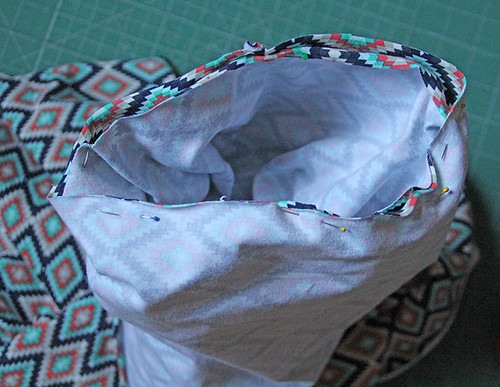
Step 10. Pin and sew the other side of the turtle neck "tube" to the neckline, right sides together. Start pinning and sewing from the center of the back side where you will position the seam.

Step 11. Your turtle neck is done.
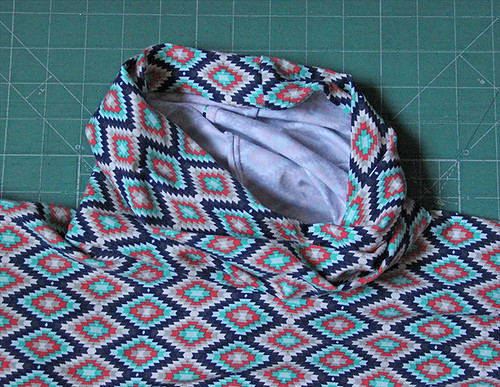
Step 12. Now the fringes.
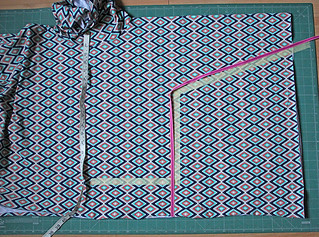
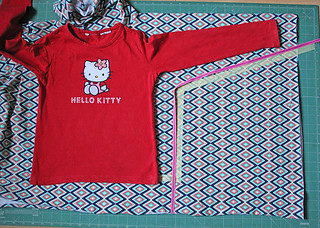
Step 12. You have to determine the side seams (in my picture it's shown with pink ribbon). The best way to do that is to place any regular tee-shirt and add approx. 2" all way around, as shown in the picture.
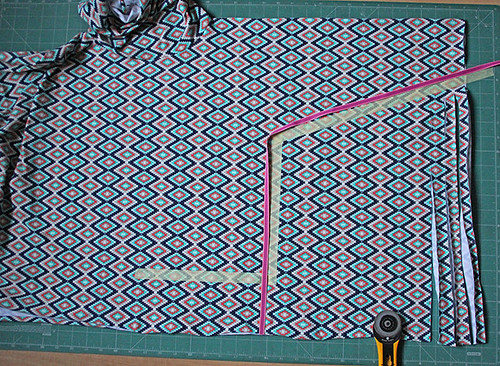
Step 13. Using the paper adhesive tape, define the cutting edges. Start cutting the narrow strips, about 0.5" wide.
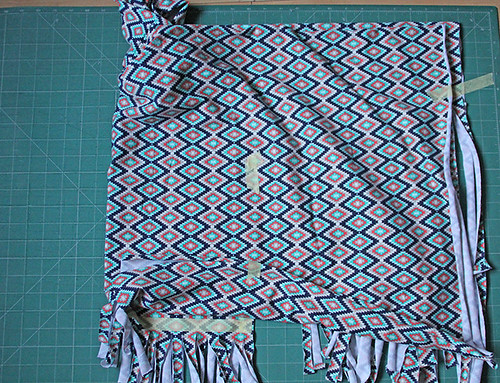
Step 14. Fold the poncho in half width wise, to transfer the defined shape to the other side.
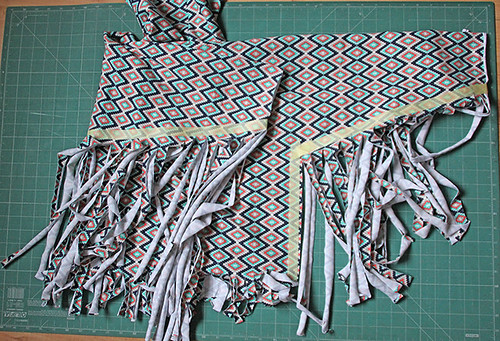
Step 15. With the sewing machine, sew a stitch along the inside side of the adhesive tape.

Step 16. Remove the adhesive tape and you are done!!!!
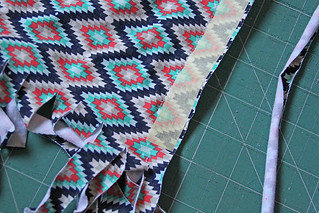
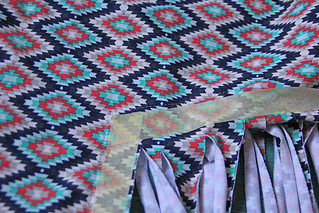
Again, if you don't like unfinished sleeve hems, just fold the edge and hem it using the zig zag stitch or double straight stitch (with twin needle).
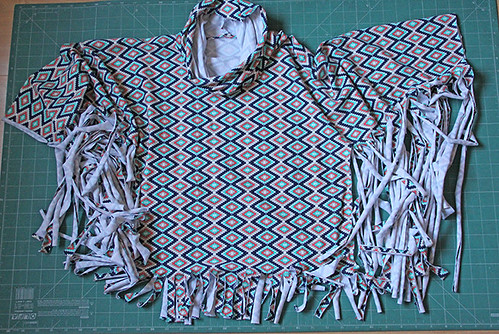
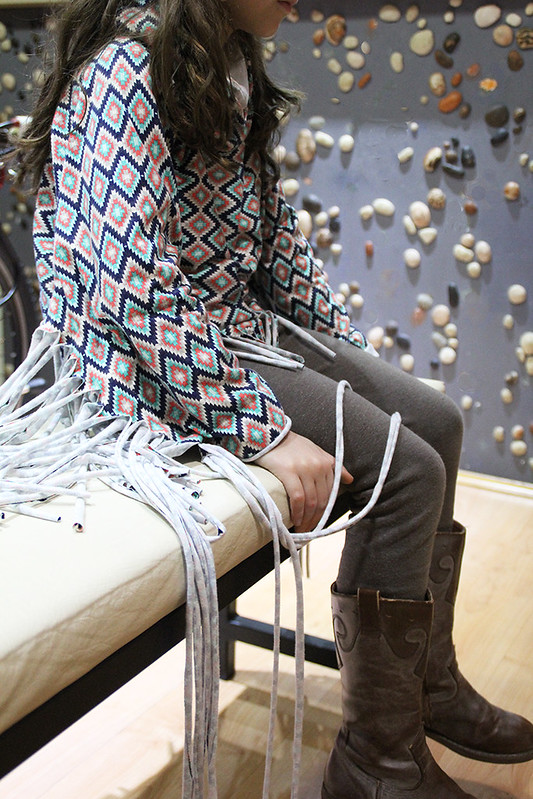
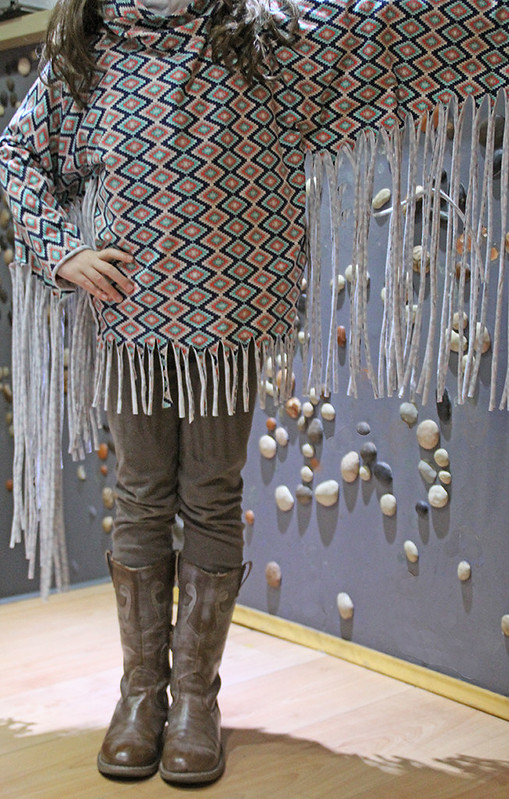
RECTANGLE FRINGE PONCHO-style2
Step 1. Cut the fabric upon your measurements.
The width of the fabric - 58/60" will be left like that for XL women size. All the smaller sizes are to be determined by the wrist to wrist measurement. My teenage daughter has the wrist to wrist measurement of 50", so that was my width cut. The length of the fabric is to be determined by that same measurement, as it has to be the square. That's why and how I got the 50x50" square for this style. This is equivalent to an S adult size.
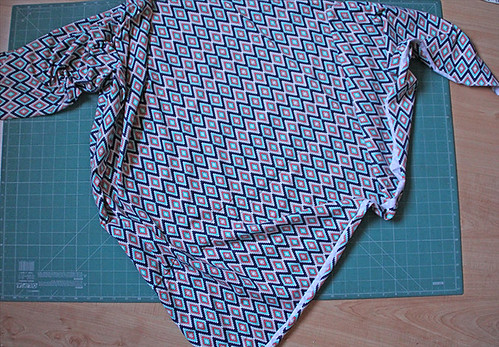
Step 2. Fold the fabric square on the diagonal square line in order to obtain triangular shape. Place your piece of the knit fabric on the cutting surface, folded in half width wise (to find the center) and cut out the neck opening that is approx. 3 x 0.5" (once opened the fabric it will be 6 x 0.5") like shown on the picture. If you are cutting in smaller sizes cut it to be full opening 4-5" x 0.5". If cutting it in bigger sizes, cut it to be full opening 7" x 0.5"
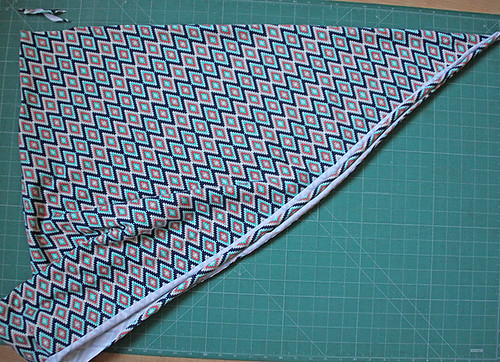
I made this style as an example of 0 sewing involved, for people that can't sew.
That's why on the following pictures, I have left the neckline just as it is, round-shaped.
To make the round shaped neckline, repeat the step 3. from the first rectangle style #1.
For the turtle neck, repeat the steps 4-11 from the first rectangle style #1.
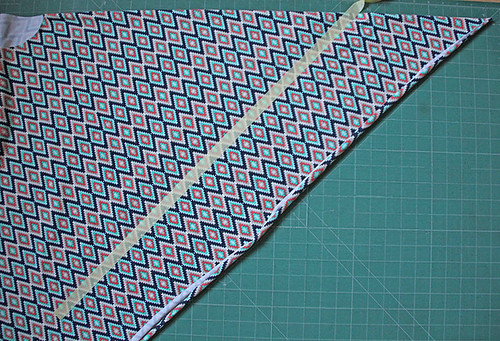
Step 12. You now only need to determine the fringe length using the adhesive paper tape.
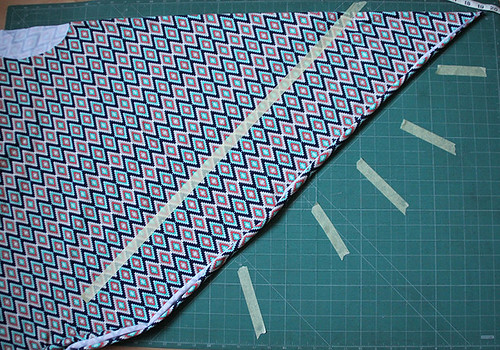
Step 13. You can make to yourself (like I did) some cutting marks on the mat, that will help you with the cutting direction of the fringes, as you are changing angle, going toward the center line.
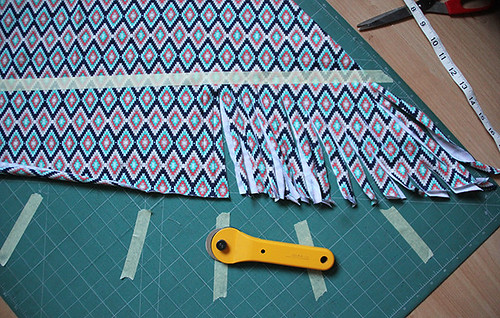
Step 14. Using the paper adhesive tape, define the cutting edges. Start cutting the narrow strips, about 0.5" wide.

Step 15. Fold the poncho in half width wise, to transfer the defined shape to the other side. Cut the fringes all way around.
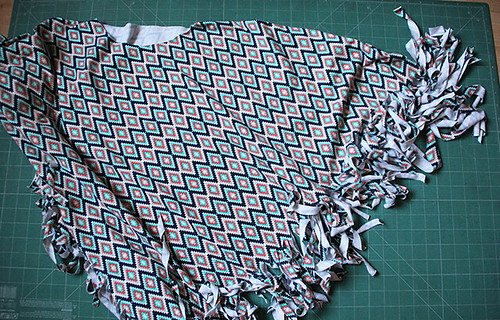
Step 16. Remove the adhesive tape and you are done!!!!
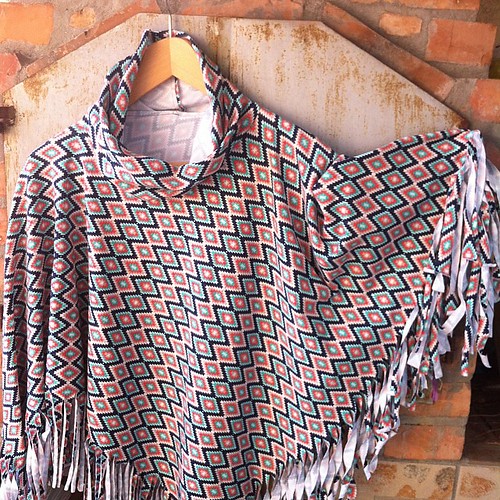
Happy sewing!
Katarina
Sunday, 7 December 2014
Braided memories quilt along
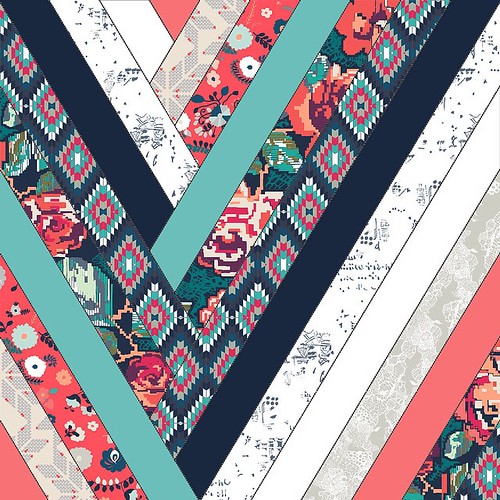
Are you ready for the Braided memories quilt-a-long?
Well I am looking forward to it. :D
My Recollection line is arriving to the shops and I wanted to celebrate that with you.
For that occasion, I prepared a nice braided block-that can be done with strips (and scraps;) and you can download and print it HERE
This is the mirror image of what you will be getting on the back of the paper.

I always wanted to learn the paper piecing and I think that this block can be nice for the start.
I also think that it can be created with traditional piecing as well, so that will be my plan B ;) Recollection fabrics and matching Pure elements-solids can make nice fabric creations, appropriate for upcoming Holidays gift-givings.
I divided the block in 4 printable sheets in order to obtain one big block that can be used as it is for cushions, but can be also used with other additional blocks to make a quilt or table runner. The numbers on the block are showing the piecing order and the letters are showing the fabric placement.
I 've found this great tutorial on You tube, for those that, like me, are beginners.
Here are the fabrics I will be using (look at the block on the first picture of this post):
fabric A: pure element "coral reef"
fabric B: pure element "snow white"
fabric C: pure element "mirage blue"
fabric D: pure element "nocturnal"
fabric E: Fairisle Hearts greige
fabric F: Bullion fronds rose
fabric G: Flowered engrams ornate
fabric H: Kilim Inherit shadow
fabric I: Cuneiform script aged
fabric J: Laced remains haze
And here are the versions of the block in second colorway of the Recollection fabrics and in 2 variations in Indelible fabrics.


Here are some quilt mock-ups.....
Well, I hope that you feel inspired and that you are willing to join me on Instagram with your projects......just use the hash tag: #braidedmemories
Happy sewing!Katarina
Subscribe to:
Comments
(
Atom
)













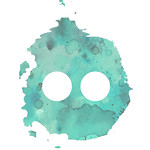

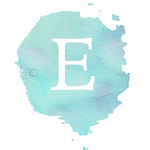



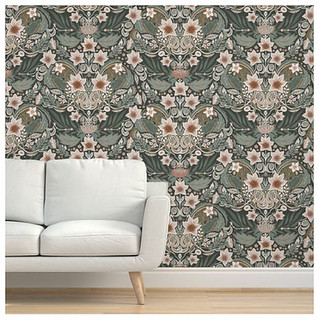







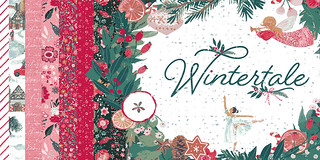
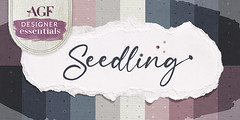
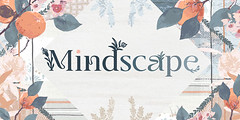

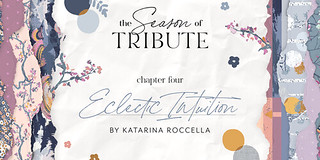
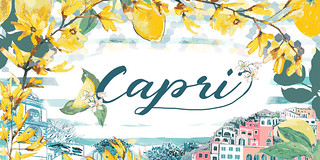
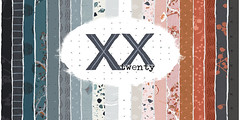


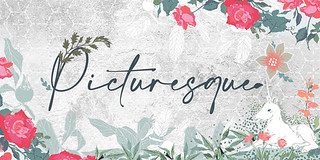


 GRID
GRID
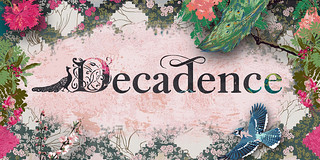 DECADENCE
DECADENCE


